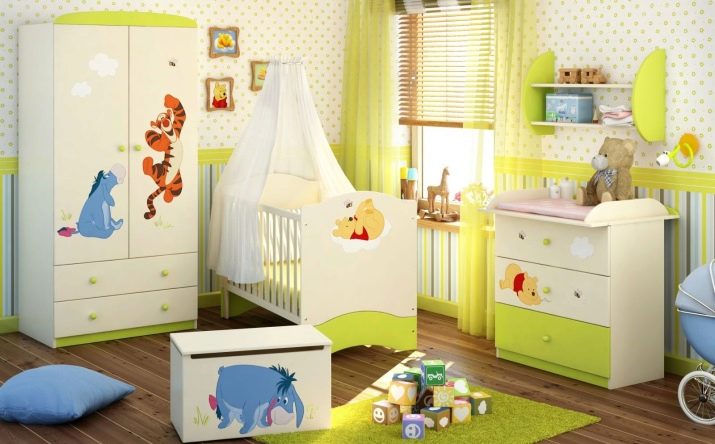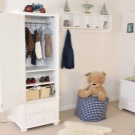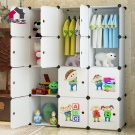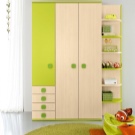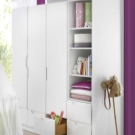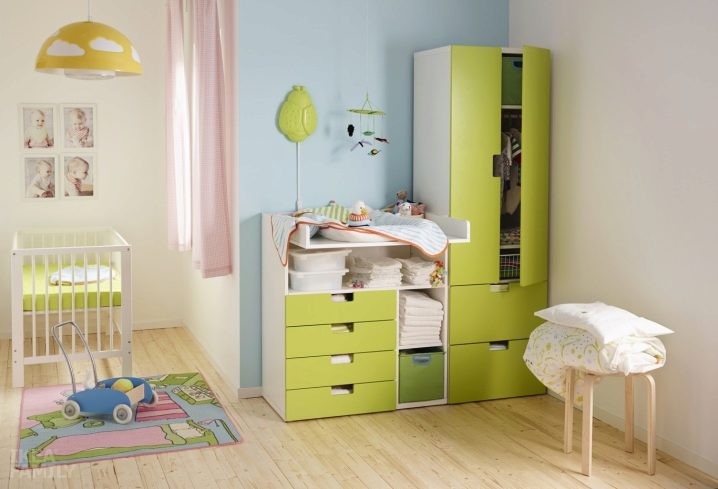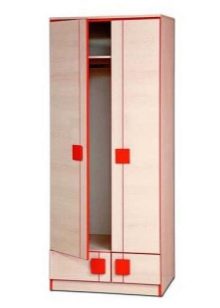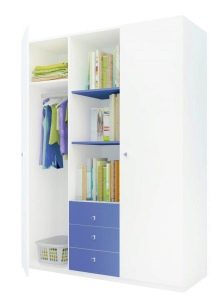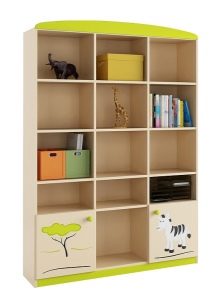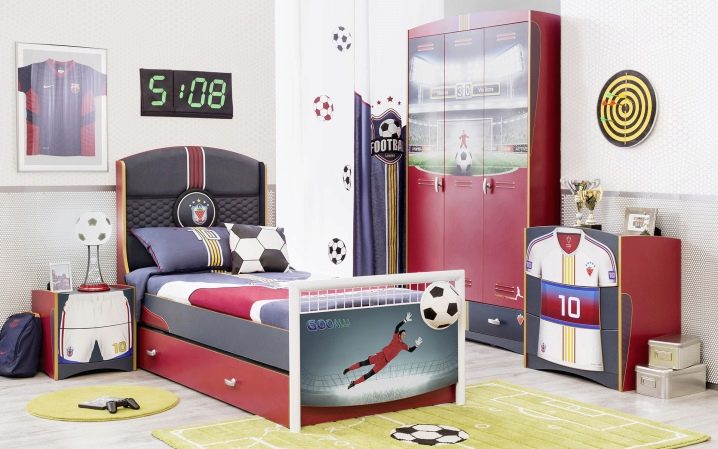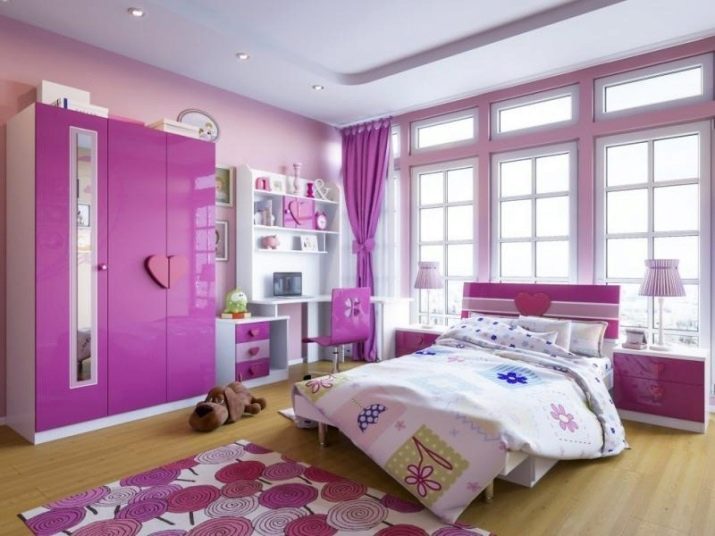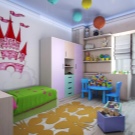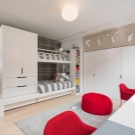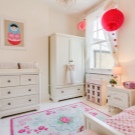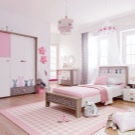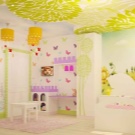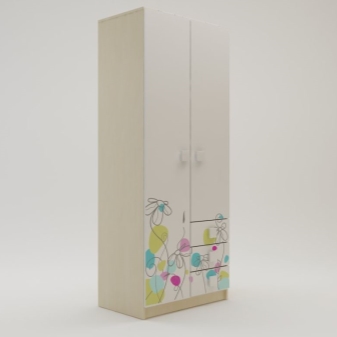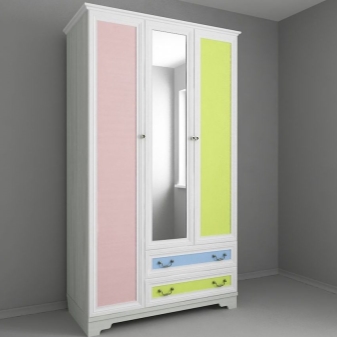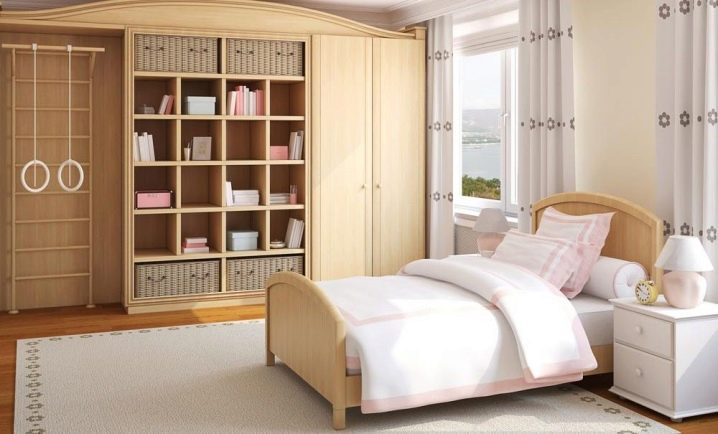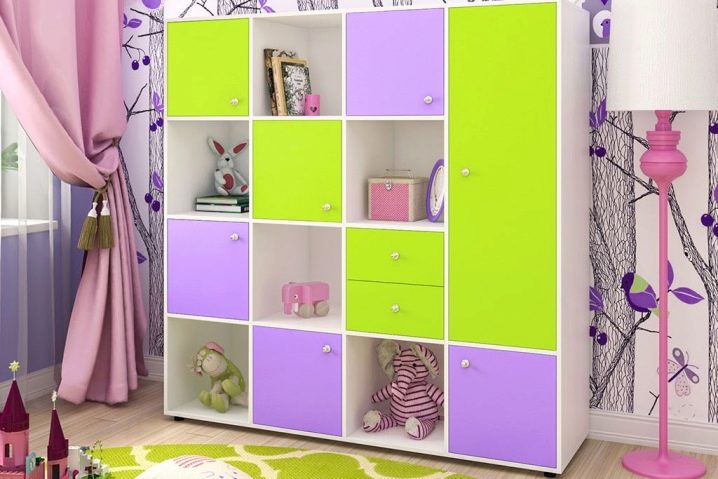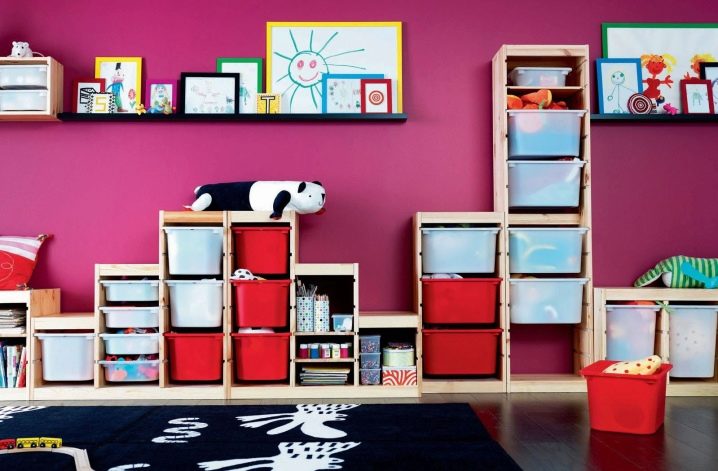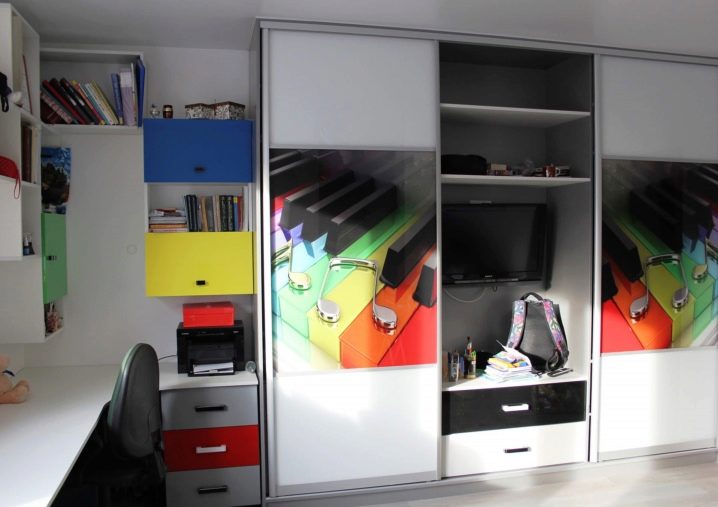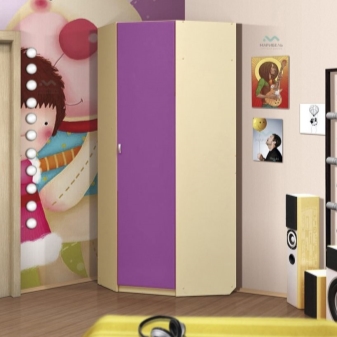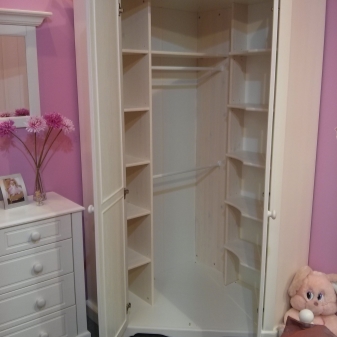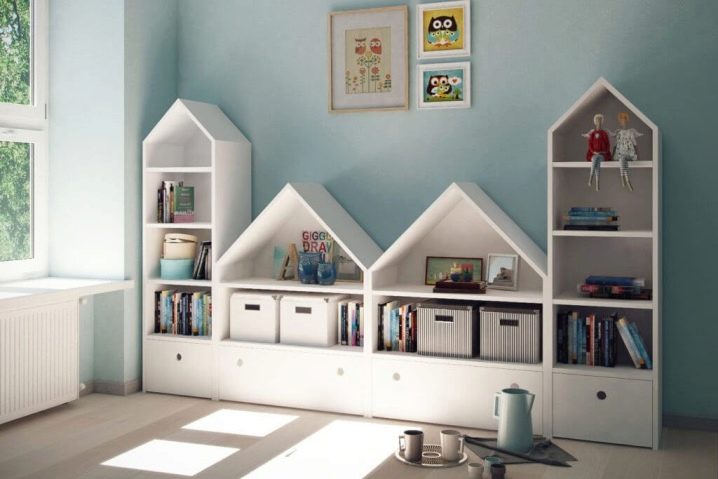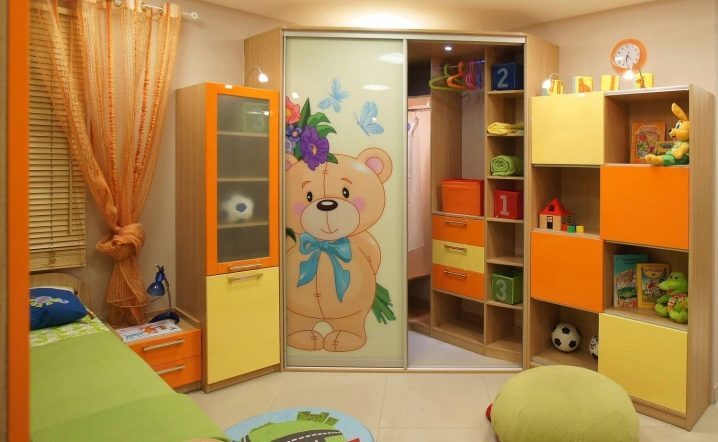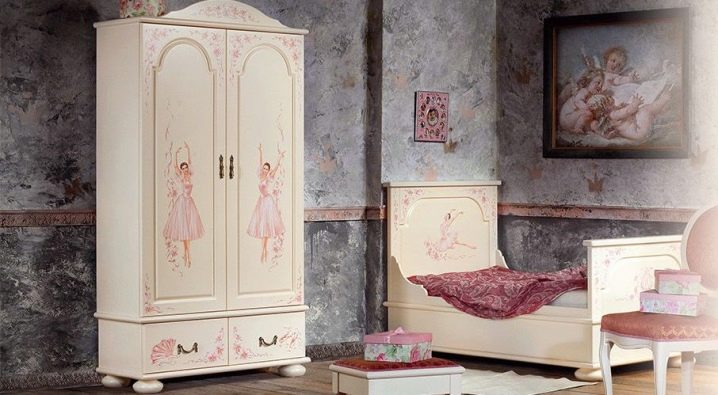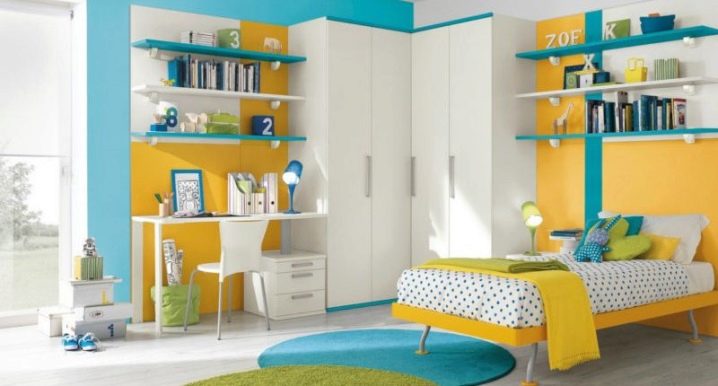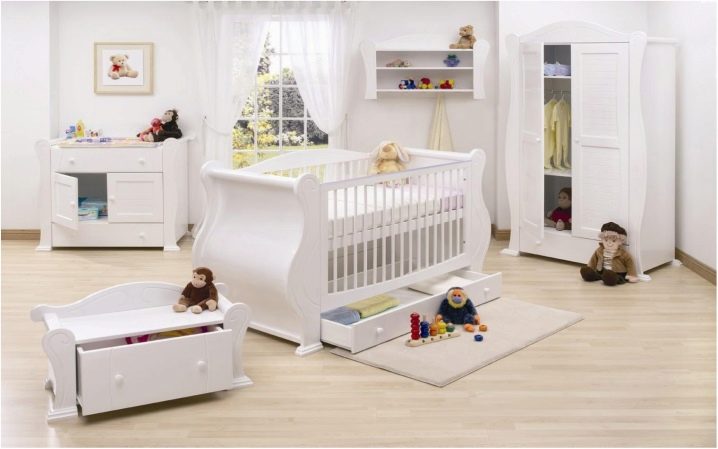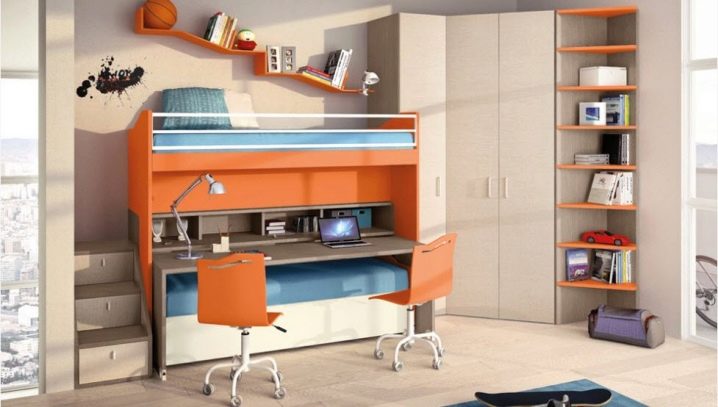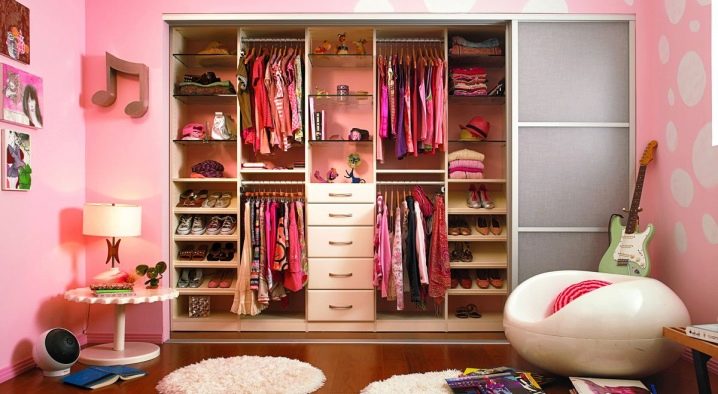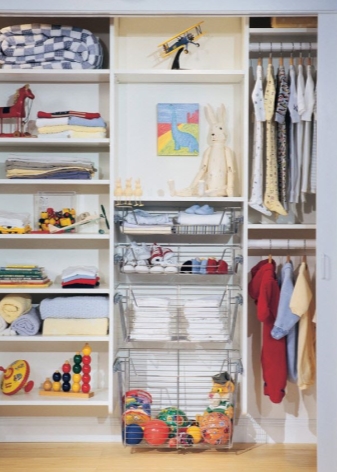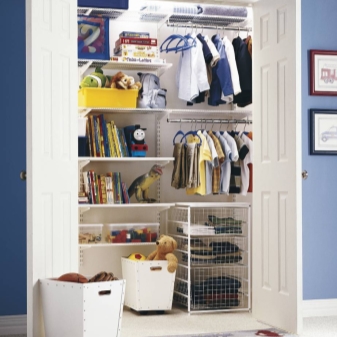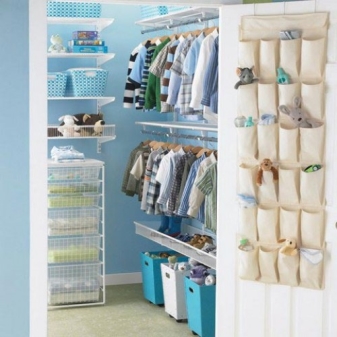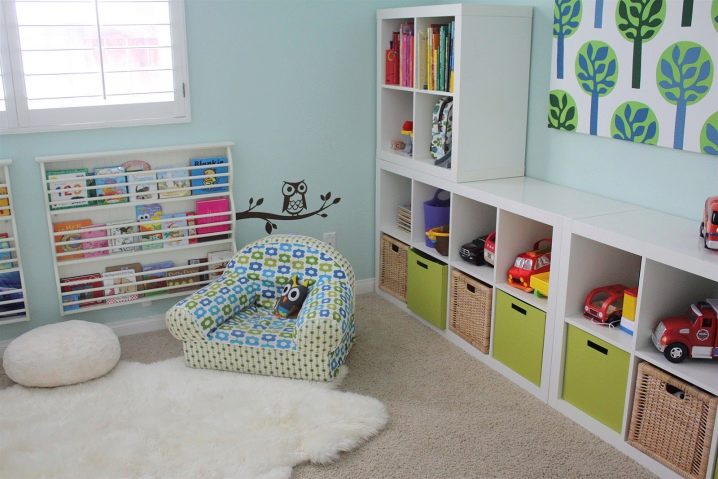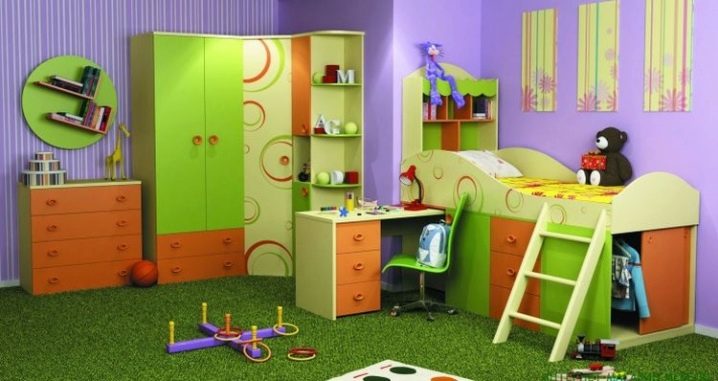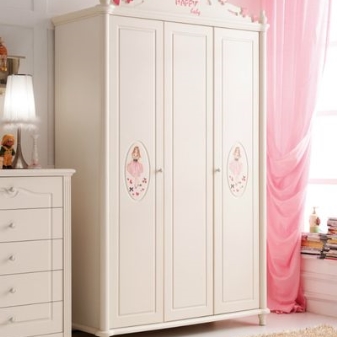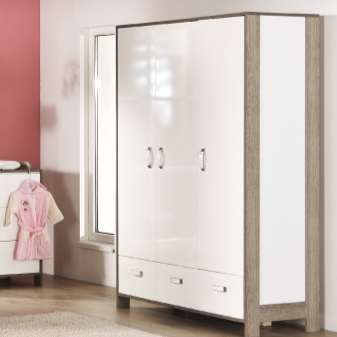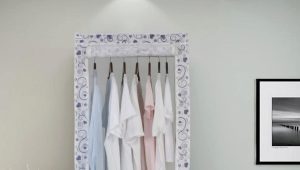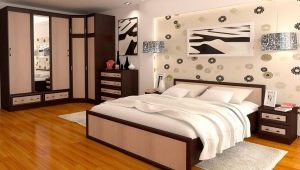Children's wardrobes
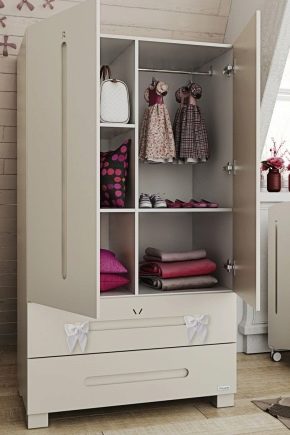
With the advent (or planning) of a child in the family, parents should prepare and provide for many things - from rattles to furniture in the room. Very often the question of choosing a children's wardrobe is brewing. What it should be - let's try to figure it out.
Special features
The main and necessary feature of the children's wardrobe is its safety. To meet this requirement, you need to take into account some of the nuances of choosing such furniture:
- Carefully consider the selection of materials - it should be environmentally friendly MDF or a more expensive option - solid wood;
- From the point of view of physical features, it is recommended to abandon the use in the design of a children's wardrobe inserts made of mirrors, glass; corners and bevels should be as rounded as possible.
- When choosing accessories, it makes sense to give preference to simpler and more durable options that cannot harm the child.
- The design as a whole must be solid and stable. Fastenings must be reliable, wear-resistant, because they will bear a fairly serious daily load.
Particularly attentive to these tips on choosing safe furniture is to listen to parents of young children. The kids are just starting to learn about the world around them and therefore the closet is not so much an object for storing clothes as a place for all kinds of games. Illiterate design, irrationally selected elements of furniture or fittings can injure a child and cause injuries.
As the child grows up, these recommendations can be somewhat neglected.
How to choose?
It’s easy to figure out what kind of wardrobe suits your child. The main thing is to decide what it will be for the closet: a wardrobe or general purpose. It is also important to decide on how many children (one or two, or maybe more) this item of furniture is designed. There are several necessary aspects to understand which will make it easier to make the right choice.
Kinds
The most popular is the classic free-standing wardrobe. Modern classic cabinets conditionally can be divided into several types:
- Foldable;
- Sectional;
- Rack.
The cabinet may have the usual hinged doors or more functional compartment doors. Popular and versatile folding wardrobes. They can conveniently arrange a large number of things, pick up the filling of the cabinet for placement on hangers, in drawers or on shelves.
In turn, the folding cabinets differ in the number of valves:
- The best option is a three-folding wardrobe: two doors for clothes on hangers (top and second layer) and a door with shelves and drawers. This wardrobe will fit well into most of the interiors, not only of the children's room, but also in the adult or the hallway.
- If the space does not allow, instead of a three-folding wardrobe you can choose a double-wing.
- A small wardrobe will be quite small, it is suitable for small rooms and a small amount of clothing.
For the children's room for two or more children suitable sectional wardrobe. Its feature consists in division into sections: each child has its own compartment. You can beat each part in a separate color, depending on the preferences of the little owners.In such cabinets, as a rule, in the lower part are used sliding shelves, and the upper compartment is designed to store things on hangers. Usually the doors of sectional cabinets open in one direction, and the filling of each section is identical.
At the request of the client can be made 1-, 2-, 3-section cabinet. Several 3 sectional cabinets, put together, are used, for example, for arranging changing rooms in a kindergarten. 1-section wardrobe can not be called too roomy, there fit only a small amount of things.
Any nursery, regardless of what kind of cabinet you pick up there, can be harmoniously complemented by a rack - stationery, books, toys, and maybe cups or other items of pride of the younger person are stored here. The feature of the shelving is that the contents of their shelves are available for public viewing.
The combined versions of children's wardrobes look interesting: a rack (open shelves) alternate with lockers (closed shelves).
If the rack has too many open shelves, you can “close” them with special drawers or wardrobe trunks that contain everything your heart desires: clothes, shoes, books, toys, and so on.
If the classics are not for you, then the models of built-in furniture for clothes or corner cabinets are what you are looking for.
Rational parents will love the built-in wardrobes, because this way you can save space in the room. These pieces of furniture are made to order strictly according to the size of the customer and are used in a niche near the doors or in difficult corners. In a word all free space from floor to ceiling is allocated for shelves and drawers. In addition, the originality and individuality of the project will surely appeal to demanding teenagers.
An empty corner in the nursery can be taken in a corner closet. If you are not confused by the fact that it will not be possible to move it, feel free to experiment. This cabinet will be deep and very roomy.
Dimensions
Furniture is always selected according to the size of the room. It is clear that in a small room should not be too bulky closet, because in this case, the child simply will not remain free space for life.
Low wardrobe can be used in the room of a preschooler: it will be convenient for a child to use such a piece of furniture on their own;Also, the upper part of a low cabinet can be functionally used as a place for the “exhibition” of photos, cups, handicrafts - all that you want to boast of, something to be proud of. And items that are not intended for independent use by a child can be put on the cabinet, where the child’s reach zone ends.
A tall wardrobe is suitable for older children or in a room for sharing. Remember that the higher the cabinet, the more stable it should be.
The depth of the cabinet may vary depending on the purpose of its use. A shallow cupboard is rather uncomfortable, although, again, it all depends on the capabilities of the room. In the deep retractable shelves it is convenient to store bed linen, there is also deposited non-seasonal clothing.
Materials
Let us dwell in more detail on what cabinets are made of. The most eco-friendly, reliable, durable, beautiful and, as a rule, expensive materials are natural. It is for the children's room that it is recommended to select furniture made from natural wood - alder, maple, birch, beech, and walnut. In addition, it is recommended to coat furniture made of natural wood with varnish or water-based paint.Thus, it will be possible to reduce the risk of allergic reactions of the baby.
Cheaper, but practically not inferior in quality to natural wood furniture models are made of MDF. Such cabinets will for a long time please their owner with external attractiveness, durability and ease of maintenance.
It is undesirable to get furniture in a nursery from a chipboard. Although such furniture is cheap enough, it should be remembered that formaldehyde resins are used in the production of chipboard, so this cupboard can release harmful substances. There are qualitative models of particleboard, in which there is not such a high content of harmful substances, they belong to the class E1.
If you still decide to buy a cabinet made of chipboard, pay attention to the processing of the edge of the canvas: they must be tightly sealed with veneer, film or plastic.
Colour
The next important step in the selection of the closet in the nursery is the choice of its color. General recommendations are as follows: the darker the room, the brighter the closet. This is especially true for the child's room, because it is there that he spends most of the time.
White cabinets will fit into any interior, where at least a bright, even a neutral shade of the wall.The doors of the white cabinet can be additionally decorated with decorative stickers of various subjects: with your favorite cartoon characters or with abstract plots. If all the furniture and walls painted white, the room risks becoming a kind of hospital room and is unlikely to cause a feeling of comfort. In addition, in this room obviously have to clean up very, very often. Perhaps the exception in this case may be the room of the newborn crumbs.
Unnecessarily bright colors of furniture and walls at the same time can unnecessarily overload the fragile psyche of a child. It is best to choose the calm colors of the interior, which will help the child to relax in his room, to feel secure and confident.
The presence of bright accents in the room is not denied. With a general calm background wallpaper, ceiling and floor can be a bright color to highlight the closet or work area. The general recommendation regarding the use of color in the life of a child of any age is: no need to dwell on one color that is traditional for a particular sex. If the room belongs to a girl, this does not mean that everything from the floor to the ceiling in it should be pink.The option "50 shades of blue" in the room for the boy is also not suitable. When choosing a color, such totalitarianism leads to the fact that an older child has a difficult sense of style.
With a preschooler and with a child of a more conscious age, it is safe to discuss the color solutions of the room and its features.
Filling
Making a decision about filling the children's wardrobe, you need to think in advance about how many things it will be used for. Will it be just wardrobe items, or should the closet fit everything to the maximum: bedding, toys and school supplies. In the closet with drawers fit a large number of things. Here, one should only take into account the age of the child - the baby cannot cope with such boxes on its own, so things of prime necessity should not be removed.
Also pay attention to the fittings - on the drawers the handles must be strong, their fastenings are reliable and durable.
How to decompose clothes?
Competently laid out things in the children's closet can save a lot of time when collecting in the garden, school, clinic, guests. Yes, and the eye rejoices, if on the shelves and hangers reigns order and harmony. A few rules will help to achieve this:
- We remove off-season items for storage on the highest shelves. Down jackets, hats and scarves are not relevant in the summer, so you can hide them away and temporarily forget about them.
- From the first rule, the second follows logically: we lay out seasonal things closer. Conveniently, when things are laid out in the order in which they need to be worn. For example: T-shirts for T-shirts, sweaters for sweaters.
- Some particularly pedantic or simply creative natures prefer to also arrange things by color. This approach is pleasing to the eye, uplifting and allows you to quickly find the right thing.
- Underwear needs a separate shelf or drawer.
- Socks and panty hoses are conveniently stored in baskets and containers. For convenience, you can sign them. Remember that you need to disassemble the socks in pairs immediately after washing and drying, so that you do not waste precious minutes at the crucial moment in search of a suitable pair.
- Accessories (belts, ties, scarves) will not take up much space if you hang them on special rods on the cabinet door.
- The ceremonial things deserve a separate place. It is very important for schoolchildren to teach them to hang a school uniform on hangers.
How to decompose children's clothes, so that it is convenient for both mother and child? Practical tips are presented in the next video.
Options in the interior
Here are some examples of competent selection of furniture in the nursery.
Rack: all on the shelves.
3-folding wardrobe in the nursery complemented by a rack.
White 3-folding wardrobe in the room crumbs.
